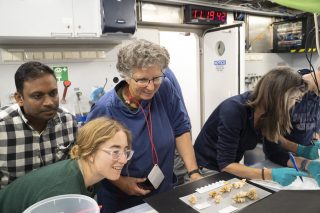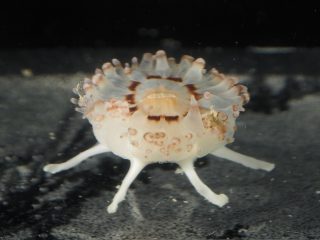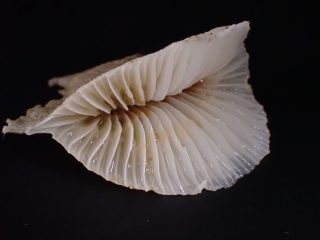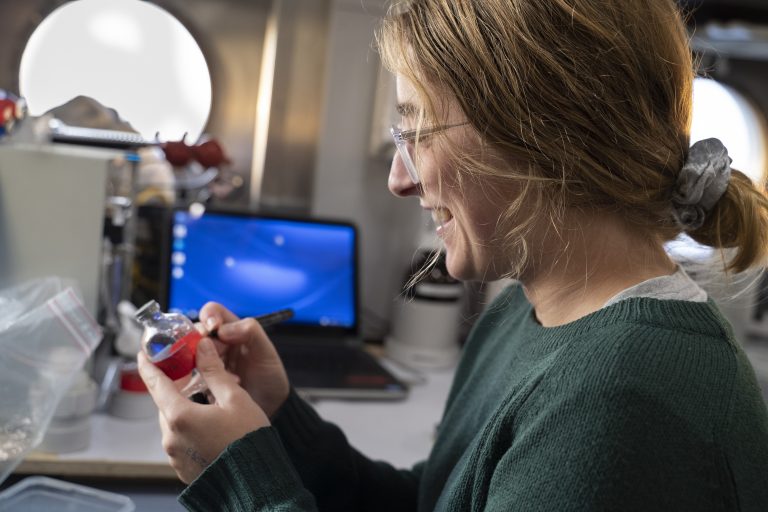Trying to understand a constantly moving ocean system is a huge challenge. Accurately measuring the chemistry of the ocean is important for understanding many processes, including nutrient and carbon cycling; ocean circulation and movement of water masses; as well as ocean acidification and climate change. On this expedition, the water chemistry team has the important job of analyzing the seawater in three canyon systems. We are measuring Dissolved Inorganic Carbon (DIC) and Total Alkalinity (TA) on board, while also saving samples for later analysis of stable isotopes, trace elements, and nutrients.
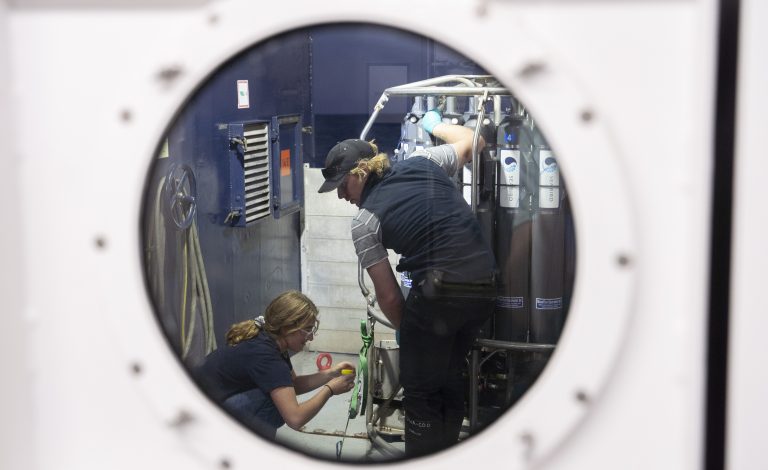
Knotty and Nice
There are some quirks of successfully doing chemistry at sea that I definitely did not consider before this voyage. Firstly, you need to know how to tie knots. Making sure all the instruments, reagent bottles, and yourselves are secured is just as important as doing the actual chemistry. The precious sample counts for nothing if it flies across the room because you forgot to put it on a non-slip mat. The movement of the boat transforms normal lab activities into fun mini challenges – opening oven or fridge doors as the ship moves with the weather, pipetting as you hit a large wave, storing sample vials in a giant freezer. It is weird (but comforting) to see our analytical instruments strapped to the bench, and doing most of my work out of a sink – the safest place to keep samples. I particularly enjoy the arts and crafts component that comes with bubble wrapping and storing samples to prevent them from being damaged by sudden movements.
After the chemistry work is done for the day, ROV SuBastian comes aboard with all kinds of creepy-crawlies from the deep sea. All the biology and geology samples that have been collected from the dive are carried into the wet lab to be sorted, processed, and archived. The lab then becomes a bedlam of buckets containing rocks, corals, sponges, shell fragments, occasional deep sea litter, and an assortment of marine creatures that I have never seen before. Surrounding these specimens is an eclectic mix of scientists who all bring their own unique interests and passions to the group.
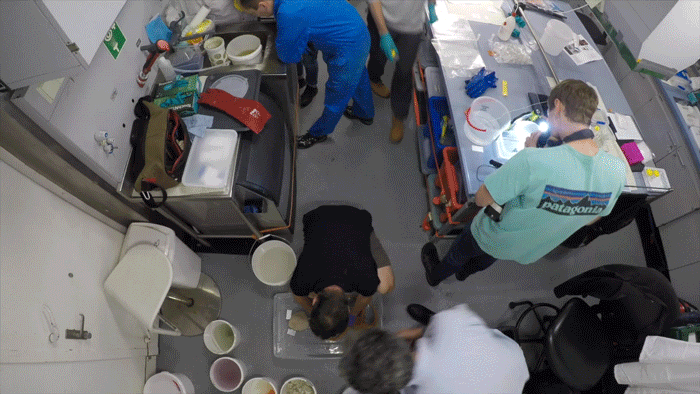 To name a few; Julie, Paolo, and their team are interested in finding calcifying corals for their paleoceanography studies. They study the chemistry of the ocean thousands of years ago, recorded by coral skeletons when they were formed. We also have Andrew from the Western Australian Museum, who is doing his PhD on specialized barnacles that live in sponges, but is interested in pretty much everything. It is not just the big things we are looking for either. Aleksey and Netra are on the lookout for tiny single-cell organisms called Foraminifera that we have found in the water column, sediments, and attached to things like corals and whale bones.
To name a few; Julie, Paolo, and their team are interested in finding calcifying corals for their paleoceanography studies. They study the chemistry of the ocean thousands of years ago, recorded by coral skeletons when they were formed. We also have Andrew from the Western Australian Museum, who is doing his PhD on specialized barnacles that live in sponges, but is interested in pretty much everything. It is not just the big things we are looking for either. Aleksey and Netra are on the lookout for tiny single-cell organisms called Foraminifera that we have found in the water column, sediments, and attached to things like corals and whale bones.
Working in a wet lab at sea has its share of challenges, but considering the important scientific discoveries that are facilitated by us being out here, the cool (and in some cases totally new) marine life we are encountering, as well as the incredible views of sun glint and waves through the lab window, I would not choose to be anywhere else. To all the undergraduate students reading this, I encourage you to seek out as much volunteer/work experience as you can. Getting involved in science firsthand is an invaluable experience: you get to work with incredible people, gain useful skills, and learn so much more about yourself and your areas of interest than you can from the classroom. Perhaps most importantly, you get to share all the exciting things you learn with others!
